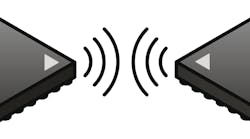Proper Testing Safeguards the Performance of NFC-Enabled Products
Near-field communications (NFC) technology has gained considerable market traction. The technology is both easy to use and has the versatility to support a wide range of consumer and business applications. NFC subsystem performance can be affected by subtle variations that can occur during device production. Therefore, manufacturers must employ verification tests to ensure the proper functionality of NFC-enabled products. In the white paper, "Test considerations for NFC enabled devices in manufacturing,",” LitePoint discusses the importance of NFC testing, explaining how the accuracy and effectiveness of production tests can be ensured.
The white paper describes NFC technology, which is a short-range wireless technology that operates at 13.56 MHz. NFC enables two-way communication, as devices communicate with each other by means of magnetic field induction when in close proximity—typically 4 cm or less. NFC utilizes amplitude-shift-keying (ASK) modulation. Data rates range from 106 to 848 kbps.
NFC products have been shipping for several years. Although they were originally slow to gain traction, nearly 2 billion NFC-enabled devices are expected to ship in 2017. These include smartphones, tablets, PC accessories, and gaming consoles. NFC technology has also generated interest because it offers the potential to enable mobile wallets and other financial transactions. In fact, ABI Research expects the value of NFC-enabled transactions to reach $191 billion in 2017.
But NFC technology must allow for a successful user experience to sustain its momentum and continue its mainstream usage. Thus, it is crucial that manufacturers offer properly functioning NFC devices. Malfunctioning devices could result in a number of negative consequences—for example, payment disruptions that affect businesses.
The white paper presents a typical architecture of an NFC-enabled smartphone, explaining the key components that should be tested during manufacturing. Frequency response testing and basic connectivity testing, which are both recommended to be performed in the manufacturing environment, are explained in further detail. The document concludes by describing LitePoint’s IQnfc+ tester, which supports measurements of the key NFC standards. L
LitePoint, 965 West Maude Ave, Sunnyvale, CA 94085; (866) 363-1911

